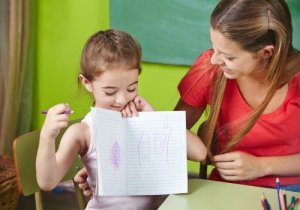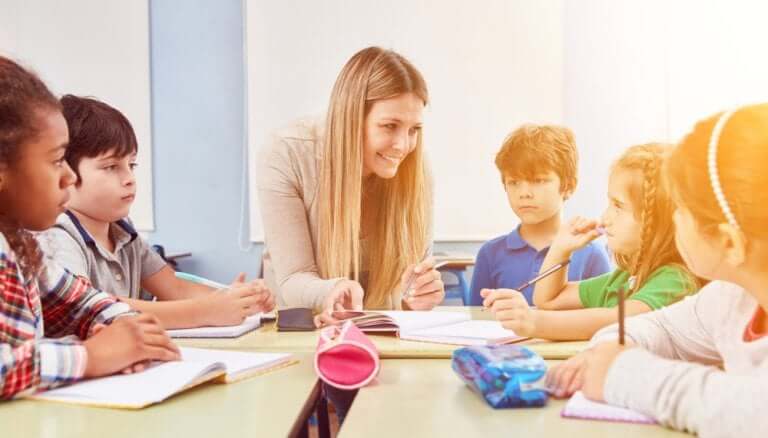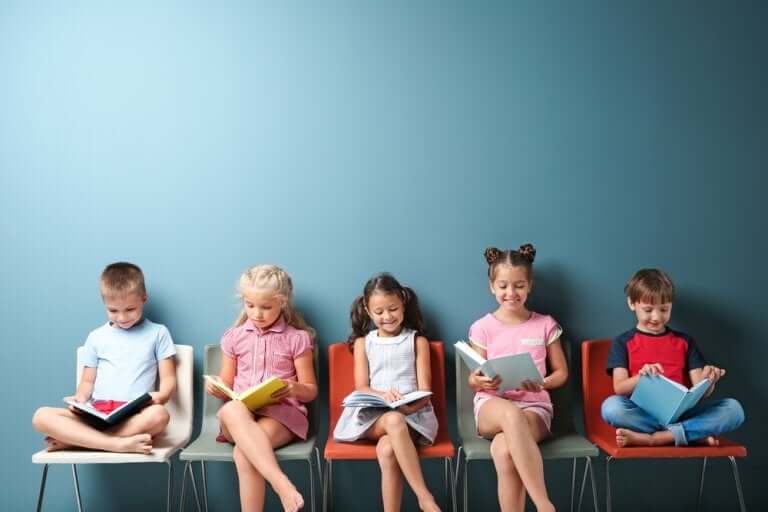Child Pedagogy: Main Characteristics and Objectives

Child pedagogy is a specific branch of study within the main science of pedagogy.
In order to differentiate it from the main area of study, we’ll first need to know what pedagogy actually is as a science. After that, we’ll take a look at what child pedagogy consists of, and what its specific objectives are.
What is pedagogy?
Pedagogy is an area of science which focuses on researching what education is as well as all the many different teaching methods that exist.
Experts consider it to be an applied science of a psychosocial nature. Its aim is to analyze, organize and enhance people’s education and training.
In any given society, there will be an understanding of how individuals should act and behave, and experts will be guided by these principles.

Pedagogy uses other sciences such as philosophy, sociology, and psychology. It approaches education as a complex phenomenon that must be approached from many different angles.
In turn, pedagogy looks to plan, execute, and evaluate the different methodologies and techniques that can facilitate teaching and learning processes.
What is child pedagogy?
As its name suggests, child pedagogy is considered to be a discipline whose main object of study is children. In fact, it generally devotes itself to studying the first few years of a child’s life.
As a branch of study, or specific type of pedagogy, it analyzes how a child matures, develops and grows. In addition to that, it focuses on the abilities that a child acquires in this first stage of life. This is because it considers them to be fundamental foundations for their future development.
In addition, child pedagogy takes into account a number of different elements when assessing individual children. These elements are generally social, environmental, and economic, among others. They’re always studied in relation to the specific context of each child.
Therefore, an expert in child pedagogy is in charge of creating, organizing, executing and evaluating the different strategies, methods and didactic resources that allow children to acquire new skills in their early years. All of this is according to each child’s individual growth and development.
The objective of this science is to develop and plan teaching situations that stimulate and enable a child’s development. Experts consider this development on a physical and biological level, as well as psychological, cognitive, social and emotional levels.
Characteristics of child pedagogy
By way of a summary, we could say that the main characteristics of child pedagogy and the methods developed and put into practice by professionals are:
- Understanding a child’s educational needs on an individual basis, and also taking into account the environment and context in which they live
- Responding to children’s educational needs according to individual situations and the different stages of growth
- Encouraging children to grow and develop in an autonomous way, and with the ability to think for themselves
- Working with the family and with the different educational centers.
- Designing, coordinating, executing and evaluating training programs. These can be both in schools and other places, such as companies, NGOs, associations, etc.
- Developing and analyzing educational policies on a wider scale, and also looking into subsidies, research and training for this stage of early childhood education.

Games: the best methodological tool in child pedagogy
Games play an important role in a child’s overall development. That’s why child pedagogy makes good use of them for educational purposes.
Games aid the learning process by making it more fun and interesting for children. Games can truly become a great didactic resource within child pedagogy.
The reason for this is that it allows experts to develop the main objective of this discipline, which is a child’s learning in their early years.
By doing this it will help to achieve the goals of professional child pedagogy, which is none other than to promote, through learning, a child’s correct motor, intellectual, creative, emotional, social and cultural development.
Child pedagogy is a specific branch of study within the main science of pedagogy.
In order to differentiate it from the main area of study, we’ll first need to know what pedagogy actually is as a science. After that, we’ll take a look at what child pedagogy consists of, and what its specific objectives are.
What is pedagogy?
Pedagogy is an area of science which focuses on researching what education is as well as all the many different teaching methods that exist.
Experts consider it to be an applied science of a psychosocial nature. Its aim is to analyze, organize and enhance people’s education and training.
In any given society, there will be an understanding of how individuals should act and behave, and experts will be guided by these principles.

Pedagogy uses other sciences such as philosophy, sociology, and psychology. It approaches education as a complex phenomenon that must be approached from many different angles.
In turn, pedagogy looks to plan, execute, and evaluate the different methodologies and techniques that can facilitate teaching and learning processes.
What is child pedagogy?
As its name suggests, child pedagogy is considered to be a discipline whose main object of study is children. In fact, it generally devotes itself to studying the first few years of a child’s life.
As a branch of study, or specific type of pedagogy, it analyzes how a child matures, develops and grows. In addition to that, it focuses on the abilities that a child acquires in this first stage of life. This is because it considers them to be fundamental foundations for their future development.
In addition, child pedagogy takes into account a number of different elements when assessing individual children. These elements are generally social, environmental, and economic, among others. They’re always studied in relation to the specific context of each child.
Therefore, an expert in child pedagogy is in charge of creating, organizing, executing and evaluating the different strategies, methods and didactic resources that allow children to acquire new skills in their early years. All of this is according to each child’s individual growth and development.
The objective of this science is to develop and plan teaching situations that stimulate and enable a child’s development. Experts consider this development on a physical and biological level, as well as psychological, cognitive, social and emotional levels.
Characteristics of child pedagogy
By way of a summary, we could say that the main characteristics of child pedagogy and the methods developed and put into practice by professionals are:
- Understanding a child’s educational needs on an individual basis, and also taking into account the environment and context in which they live
- Responding to children’s educational needs according to individual situations and the different stages of growth
- Encouraging children to grow and develop in an autonomous way, and with the ability to think for themselves
- Working with the family and with the different educational centers.
- Designing, coordinating, executing and evaluating training programs. These can be both in schools and other places, such as companies, NGOs, associations, etc.
- Developing and analyzing educational policies on a wider scale, and also looking into subsidies, research and training for this stage of early childhood education.

Games: the best methodological tool in child pedagogy
Games play an important role in a child’s overall development. That’s why child pedagogy makes good use of them for educational purposes.
Games aid the learning process by making it more fun and interesting for children. Games can truly become a great didactic resource within child pedagogy.
The reason for this is that it allows experts to develop the main objective of this discipline, which is a child’s learning in their early years.
By doing this it will help to achieve the goals of professional child pedagogy, which is none other than to promote, through learning, a child’s correct motor, intellectual, creative, emotional, social and cultural development.
All cited sources were thoroughly reviewed by our team to ensure their quality, reliability, currency, and validity. The bibliography of this article was considered reliable and of academic or scientific accuracy.
- Fernández, A. Y. M., & Roldán, E. M. P. (2012). El diario pedagógico como herramienta para la investigación. Itinerario educativo, 26(60), 117-128. http://www.revistas.usb.edu.co/index.php/Itinerario/article/view/1406/1199
- María Vizcaíno Timón, I., Blasco Cruces, A. (2017). Hablemos de educación infantil: orientaciones y recursos (0-6 años). Editorial Praxis. México.
- Ospina, F. A. R. (2016). Epistemología de la pedagogía infantil. Ciencia e Interculturalidad, 19(2), 19-30. https://lamjol.info/index.php/RCI/article/view/3116/2865
- Sandín Ibañez, C. (2016). El proyecto de educación infantil y su práctica en el aula. Editorial La Muralla. Madrid.
- Tamayo Lorenzo, S. (2014). La transición entre etapas educativas: de Educación Infantil a Educación Primaria. Participación educativa. https://redined.educacion.gob.es/xmlui/bitstream/handle/11162/108841/tamayo.pdf?sequence=1&isAllowed=y
- Vilella, S. B., & Rodríguez, N. O. (2020). Una intervención multidisciplinar para mejorar la estimulación temprana de alumnado español de educación infantil. Revista Estudios en Educación, 3(5), 68-82. http://ojs.umc.cl/index.php/estudioseneducacion/article/view/145
- Zuleyka Suárez Valdés-Ayala (2014) La Pedagogía y la Educación. Dos conceptos distintos. Revista UMBRAL, Colegio de Licenciados y Profesores en Letras, Filosofía, Ciencias y Artes Costa Rica (Colypro); 2014. Lemus, L. (1969). Pág. 3-44. http://www.colypro.com/revista/articulo/la-pedagogia-y-la-educacion.-dos-conceptos-distintos
This text is provided for informational purposes only and does not replace consultation with a professional. If in doubt, consult your specialist.








